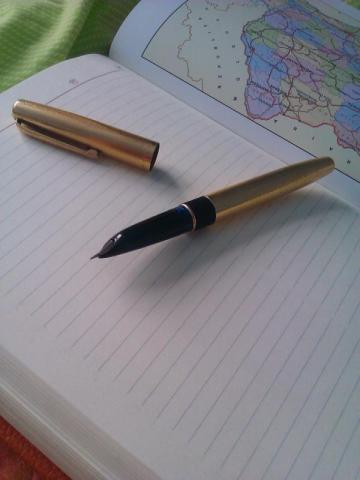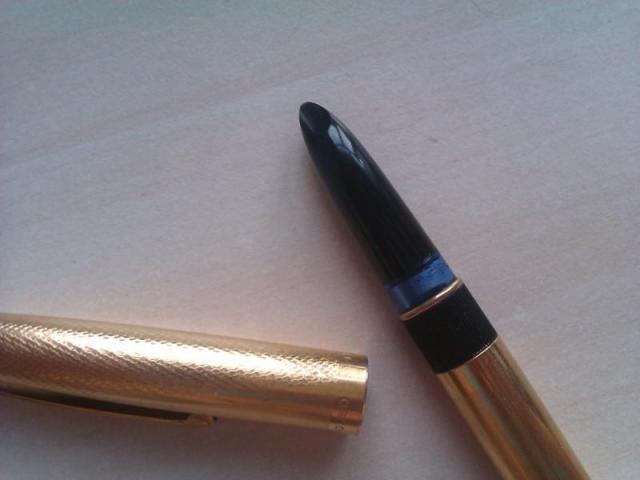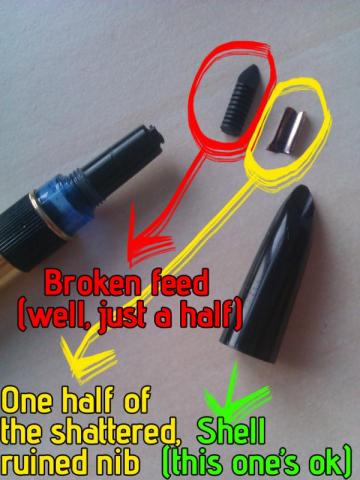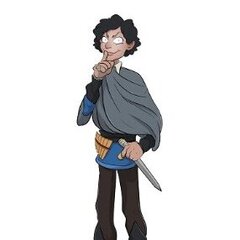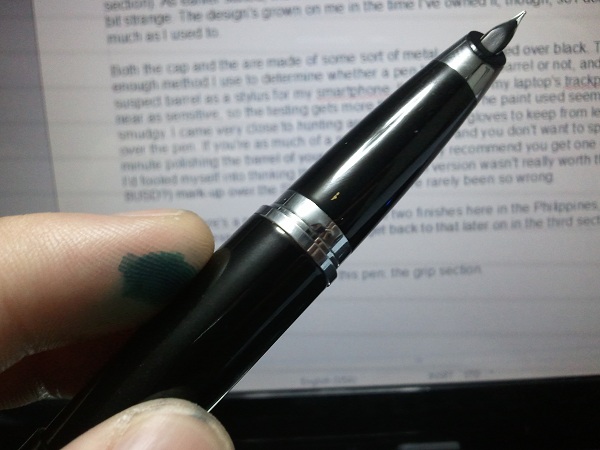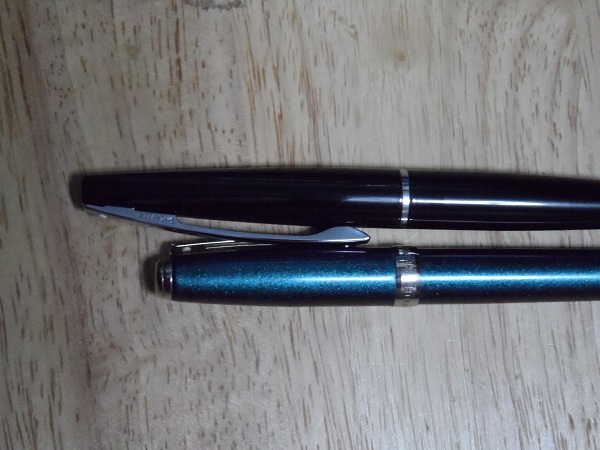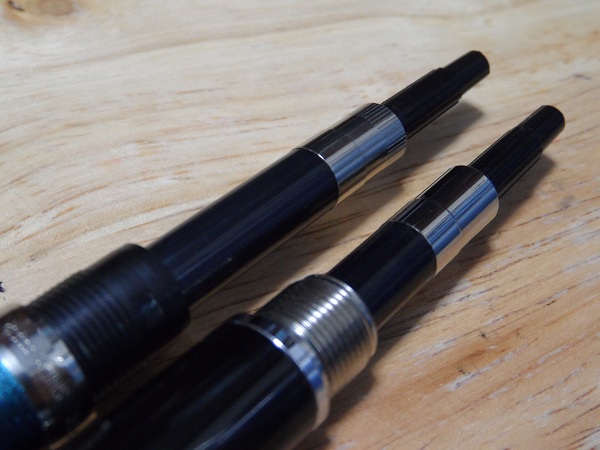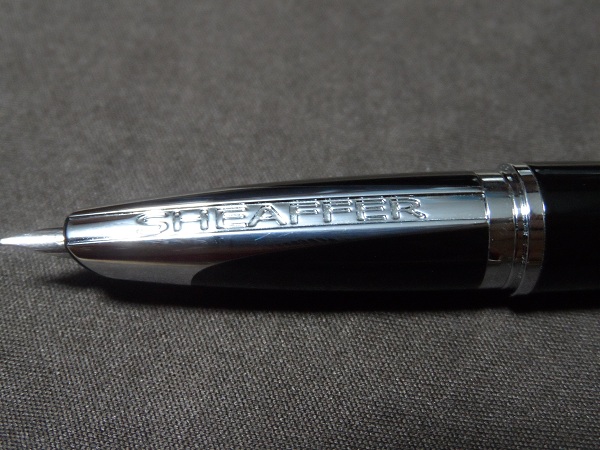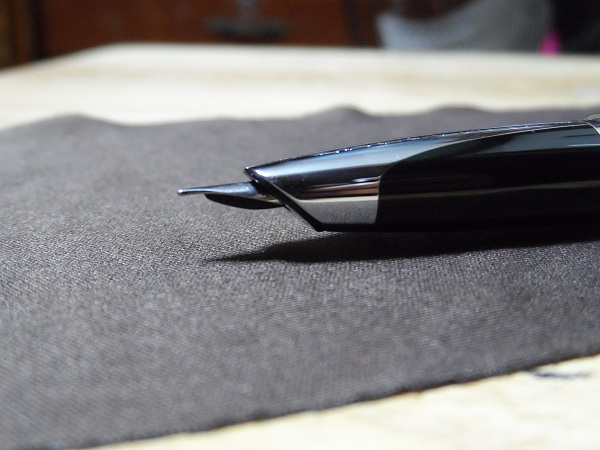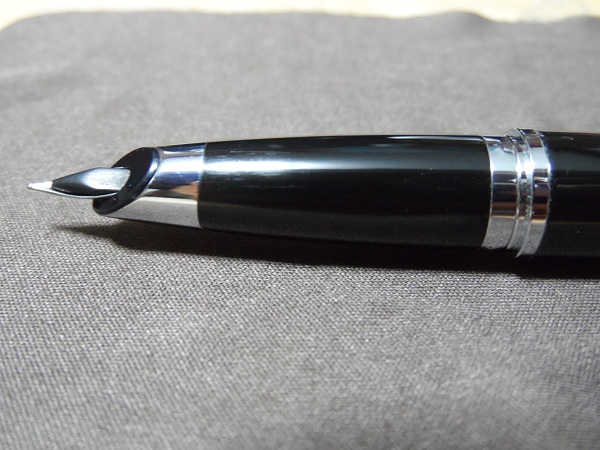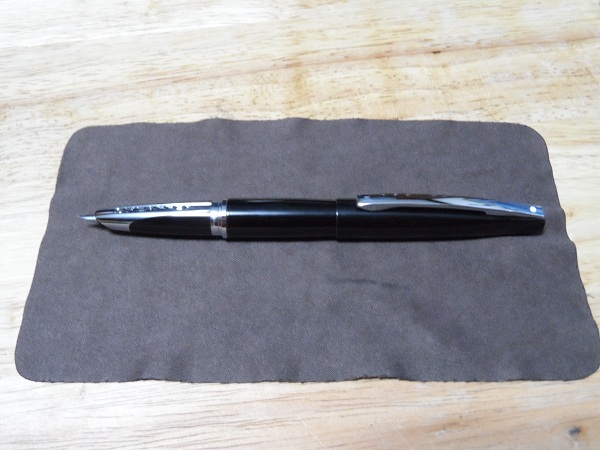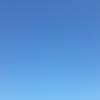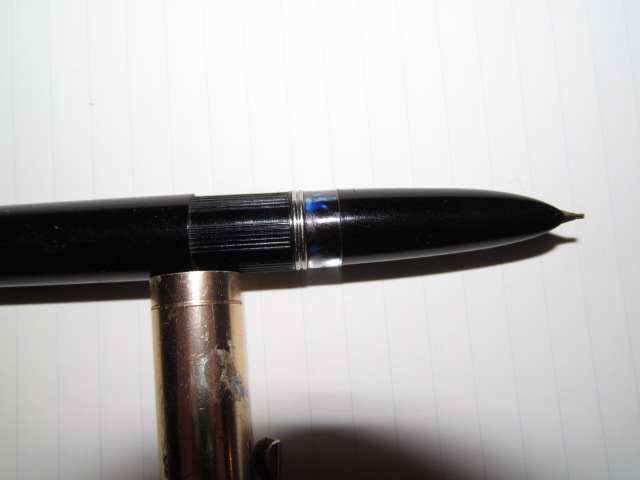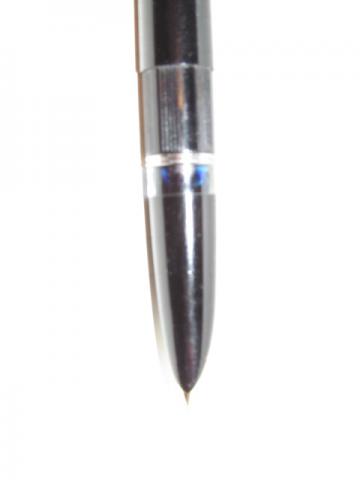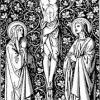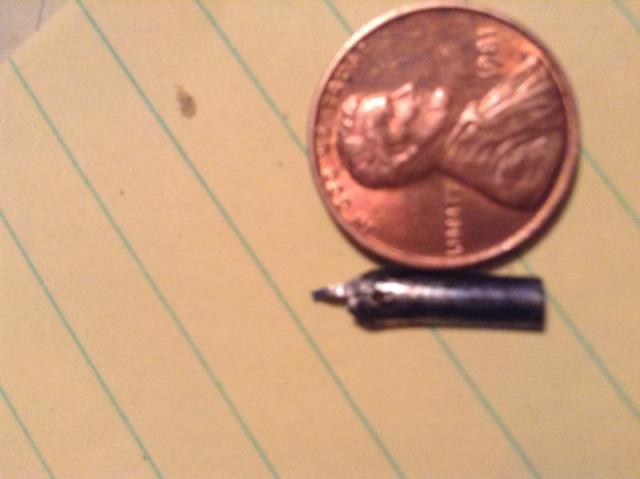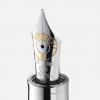Search the Community
Showing results for tags 'hooded nib'.
-
parker21 HELP! How do I remove the nib and ink collector from the hood of my Parker 21 Super
Fudanshi62 posted a topic in Parker
I'm trying to realign the nib and hood of my Parker 21 Super but the nib unit is stuck to the hood and I can't get it out. Please help!- 4 replies
-
- parker
- hooded nib
-
(and 1 more)
Tagged with:
-
Pen: 802 Make: Wing Sung Cost: $4 Nib: F Packaging & Accessories: (5/10) The pen came wrapped like a gag Christmas gift. The pen itself was wrapped in bubble wrap and around that, layers and layers of mustard colored packing tape. Took some time and effort to get to the cente...
-
Where Can I Find Replacement Nibs And Feeds For A Fountain Pen With Hooded Nib?
EdwardM posted a topic in Repair Q&A
Hello FPN, This is my first post here, although I've been reading the forums since a few weeks. I have a Montegrappa pen, about which I don't know much: just that it is over 20 years old and used to write heavenly. I started using it a few weeks ago, when I began liking fountain pens. I have l... -
This is certainly the most shocking / awe inspiring news from the Chinese Fountain Pen market that came surfaced recently .... well ... take a look yourself Parker China had the pages taken down already but the leak is out .... first photo show text say " new generation Parker 51 " , 2nd phot...
- 49 replies
-
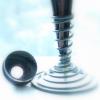
Jinhao 51A, Another New ( Or Is It Renewed ) C/c Filling Hooded Nib
Mech-for-i posted a topic in China, Korea and Others (Far East, Asia)
Guess what, we have Wing Sung 613, Hero just got us 616 plus, and Jinhao obviously not wanting to be left behind I guess .... we have da da da .... Jinhao 51A ( courtesy of my window shopping around for summer hiking supply, somehow end up showing me this ... ) .. look like there is 3 solid color ve... -
I understand the original "new" Duo carts had issues. But if you order the blue or green one, it's the new-new version that fixes some issues, such as leaking. Anyone have one? How do you like it? They're awfully purty-lookin'. Also, does it come with a little bottle of ink? What's the ink? (Aurora...
-
I like Frank Underwater's name for this filling mechanism so that's what I'm using. This has been my go-to pen for about a month now. The Wing Sung 601 is a high-quality writing instrument. I recommend it highly. Having said that, my first impressions were less favorable. This is a pen t...
- 53 replies
-
- chinese pens
- draw filling mechanism
-
(and 2 more)
Tagged with:
-
 Hmmm.. so I got my order of the new Hero 616Plus delivered almost for a week and of course instantly I tear off the packaging and get to the pen and was keen on trying to see how it goes, but even a single eyeball give me suspicions .. hard to say but I sense something really different here .. call...
Hmmm.. so I got my order of the new Hero 616Plus delivered almost for a week and of course instantly I tear off the packaging and get to the pen and was keen on trying to see how it goes, but even a single eyeball give me suspicions .. hard to say but I sense something really different here .. call...- 24 replies
-
- hero 616
- wing sung 613
-
(and 3 more)
Tagged with:
-
SHEAFFER TARANIS (Stormy Night) Review: Someone Had To Write One Eventually Leaving my choice in tag lines aside, I'm fairly sure that the title of this article managed to turn some heads all on its own. This is, after all, a review of an extremely interesting pen, one possessing the weight of...
- 41 replies
-
- sheaffertaranis
- hooded nib
-
(and 2 more)
Tagged with:
-
Oh ... this for you ladies ..... Well other than all the big names , China do had a school of small independent brand, and many fashion designer brand that made pens, most are OEM of others model but some do have their original design, and sometime you bump into something unique, interesting and...
- 15 replies
-
- liveinyou
- hooded nib
-
(and 2 more)
Tagged with:
-
Hopefully my educated guess is correct in attributing this to Tropen, and thus I'm posting in the correct place! Got this given to me at Christmas, and finally got around to posting some pics in the hopes that someone can tell me something about it. The cap, I suspect is from a Waterman (and pret...
- 6 replies
-
- cadillac
- hooded nib
-
(and 2 more)
Tagged with:
-
Hello, I'm relatively new to fountain pens, I've used Lamy Safaris for years when I was in school, but didn't know that much about fountain pens. Recently I've become more interested in them. Several months ago I was gifted a Waterman Hemisphere and am quite happy with it. Of course it's not the b...
-
My first review has to be handwritten, hasn't it? http://c7.staticflickr.com/9/8501/28971094030_76a56e0ff4_c.jpg This is the most unlikely pen in my collection. More than a year ago, at the very start of my pen craze, a friend gave it to me and said: "I'm sure it's no more than a novelty piece, bu...
-
Please Help Me Identify This Mystery Pen
sandy101 posted a topic in Fountain & Dip Pens - First Stop
I wom this pen on e-bay this week-end, and it is proving to be a nice wee writer. Unfortunately, the badge or jewell that may have been on the cap has been detatched and there are no markings on the pen to indicate where it is from. It is resin/plastic or acryllic, there is an ink window, and it i...- 6 replies
-
- hooded nib
- piston filler
-
(and 1 more)
Tagged with:
-
I recently picked up a vintage Scripto Fountain pen with a hooded nib for less than $2 at a flea market. I brought it home and opened it up. The ink sac is in fairly good shape, holds ink but could be replaced. The nib and feed ( see picture) was very damaged and chipped. Does anyone know where I c...
- 2 replies
-
- scripto
- hooded nib
-
(and 1 more)
Tagged with:
-
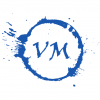
Hero 336 - Hooded Nib - Buttery Smooth
mehandiratta posted a topic in China, Korea and Others (Far East, Asia)
HERO - 336 Over the period of past 4-5 months i have started collecting Chinese Fountain pens which i will be reviewing one by one. This review is about the pen which was recommended to me by Mr. Subramaniam of ASA Pens after i have collected lot of Chinese Fountain Pens from local market of Old... -
First Impressions (8)For a dollar forty, I wasn’t expecting much, but this pen proved to be a great value for the price. It is a true fine nib, and I have not had any problems with it thusfar. Appearance (9)The design of this pen is a gold gridded body with a black cap, black section, and a steel h...
-
The next entry in my "Cheap Chinese Pen I got from eBay" series is the... Duke Uranus M25 Fountain Pen Price: $5.90 Nib: Extra Fine, Steel, Hooded Country of Origin: China Filling System: Piston (push type) http://gizmosauce.com/img/duke_m25_01.jpg Appearance: 8 / 10 The fi...
-
Yiren 3156 – Russet Brown version Standard disclaimer first: I received this pen from Kevin at JustWrite Pens (www.JustWrite.com.au), in return for an impartial review. I initially wasn’t going to put up a post about it, because it just didn’t ‘grab’ me – but figured others might benefit from the r...
- 6 replies
-
- chinese pens
- yiren
-
(and 1 more)
Tagged with:




